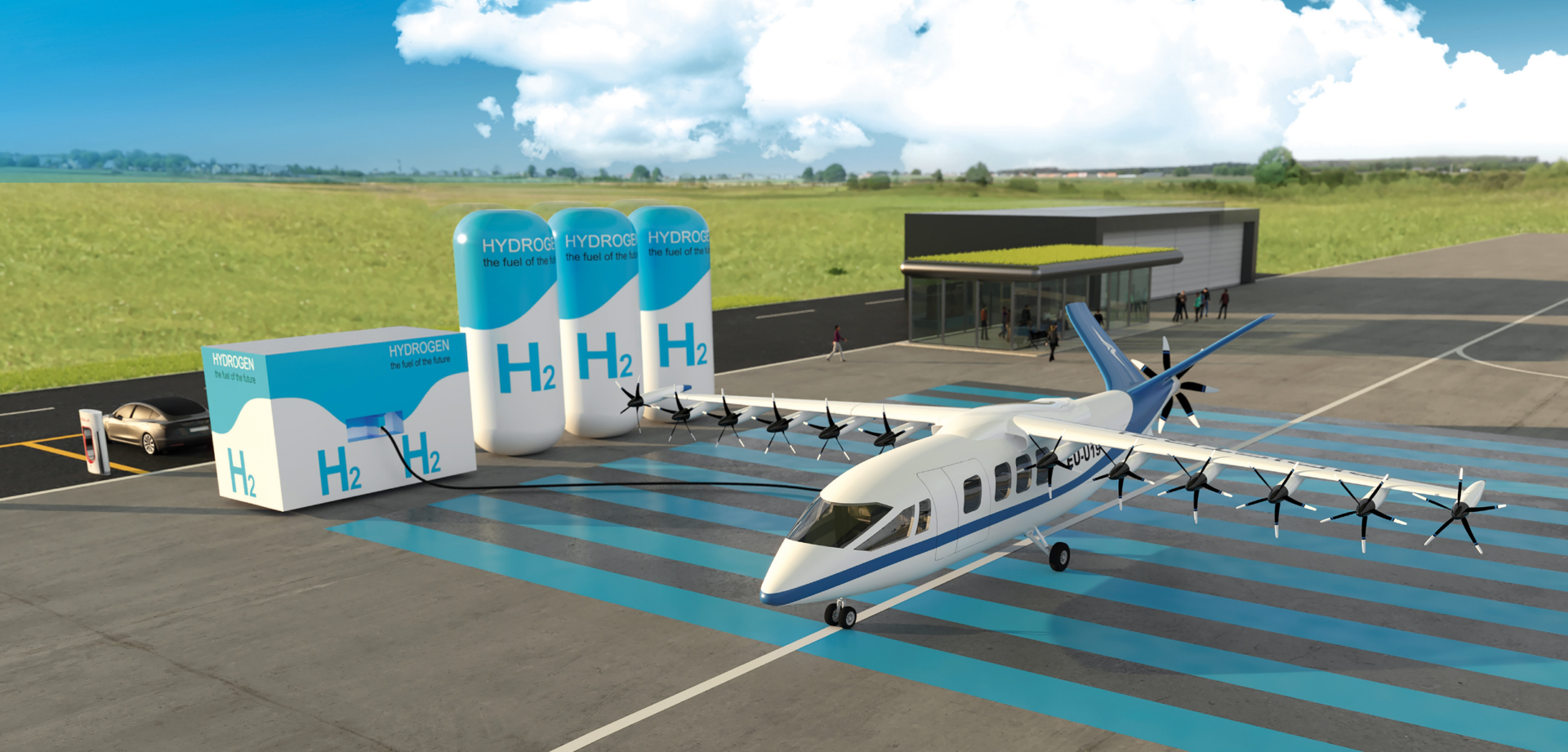The European aviation sector currently supports almost 10 million jobs and accounts for €672 billion in European Union economic activity, according to the Aerospace and Defence Industries Association of Europe, through the operation of airlines and airports, through aerospace manufacturing and services, enabling tourism and supply chains. However, the environmental consequences of travelling by air can no longer be ignored.
We asked Axel Krein, Executive Director of Clean Aviation Joint Undertaking about the milestones to a decarbonised aviation sector:
Disruptive technology: the ticket to sustainable flight?
Our Clean Sky, Clean Sky 2 and Clean Aviation programmes have been exploring new and disruptive technologies that can accelerate the transition to net-zero air travel.
Roland Berger carried out a study to quantify the socio-economic impact the Clean Sky 2 programme since it started in 2014, taking into consideration the COVID-19 pandemic and the Ukraine crisis. The study also investigated the future outlook for the aviation sector and the future impact of Clean Sky 2 as the technologies we have developed mature and reach the market.
How are you delivering on your environmental objectives?
Clean Sky 2’s mission to create innovations that can significantly reduce the carbon, NOx and noise impact of aircraft is well on-track. The global social value of reduced CO2 emissions resulting from our technologies could be worth €200 billion between 2035 and 2050.
Clean Sky 2 technologies will deliver a 15% reduction in carbon dioxide emissions per seat-kilometre by 2050 compared to 2014 technology, as well as a 31% reduction in NOx emissions within the same parameters. Overall, the study estimates that incorporating Clean Sky’s technologies into the global aircraft fleet by 2050 will result in a global environmental value of a total of €320 billion – of which 60% is due to CO2 reduction and 40% is due to NOx reduction.
What are the economic perspectives for the Aviation sector?
They are very good! The European aviation sector looks set to grow– up to 18.5 million European jobs will be supported by the aviation sector in 2050. These posts include roles not directly linked to aviation, such as supply chain and tourism positions, demonstrating the knock-on effect that a strong aerospace sector has on the rest of the economy.
How is innovation driving competitiveness?
Investing in science, technology and innovation are critical drivers of economic growth and competitiveness. Clean Sky 2 projects alone will support almost 5000 jobs between 2015 and 2024.
As Clean Sky 2 technologies enter the market, they will continue to deliver economic benefits – a total of €8.6 billion by 2050 in real, net present value terms is expected, equivalent to more than three times the initial public and private investment made.
The research and development activities funded by Clean Sky 2 grants and contributions from companies to the Clean Sky 2 projects from 2015 to 2024 directly contribute an average of €109 million per year to Europe’s GDP.
Clean aviation, we cannot do this alone
Of course, the story of Clean Sky will not end with Clean Sky 2! The Clean Aviation programme is focusing on three thrusts as the backbone of our journey to climate neutrality:
- Hydrogen-powered aircraft
- Hybrid Electric Regional aircraft
- Ultra-Efficient Short and Medium Range aircraft
The official list of 20 daring new projects worth over €700 million was released 27 September and technical work should begin this year.
But we cannot do this alone – several other pieces of the puzzle must also be in place.
Accelerate adoption of 2030+ Entry in Service aircrafts. 20-25 years is the typical lifespan of a commercial aircraft. Encouraging retirement and new purchases through regulatory or commercial push might be essential.
Shorten design, development and certification cycles. Without compromising on safety we need to shorten aircraft design and development cycles and to improve manufacturing systems so that cleaner and better aircraft can be flying sooner.
Reconfigure Aviation and ATC infrastructure. Air traffic control and aviation infrastructures will need to be overhauled and quickly. If we look at hydrogen, it is 3 times the volume of kerosene, so a full suite of new infrastructure will be required if Europe is to host a large fleet of hydrogen-propelled aircraft.
Boost availability of Sustainable fuels. These will be crucial to the clean aviation revolution, but what’s not yet clearly defined are the supply chains and the feedstocks of these fuels. We must have a sufficient and constant supply of sustainable aviation fuels and hydrogen to make these new eco-friendly aircraft a reality.
Enable the adoption of new airline network strategies will be key to unlocking the full potential of regional aircraft with novel propulsion systems, such as hydrogen (fuel cell) and battery electric. These aircraft could represent a major share of decarbonisation.
Develop and implement mitigation strategies for non-CO₂ effects. The total climate impact of aviation may be 2-4x as much as the impact of CO₂ alone. We must improve research into these non-CO2 effects and into the potential emissions impact of new clean aircrafts.
Clean Sky 2 and Clean Aviation disruptive technologies will have far-reaching benefits. Our programmes have a knock-on effect on society and the economy, creating jobs, fostering innovation and generating wealth as well as reducing the environmental impact of the air transport sector.
Read the independent study on the socioeconomic impact of the Clean Sky 2 programme here.
Content supplied by Clean Aviation Joint Undertaking


